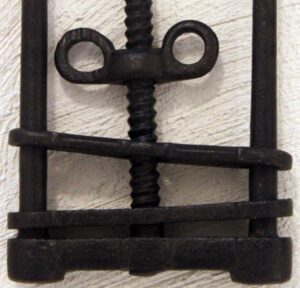
The Thumbscrew
The Thumbscrew was a simple but effective device used to crush the victim’s fingers or thumbs, often resulting in pain and permanent damage.
Medieval Europe was a time of great brutality when it came to justice and punishment. Torture was often employed as a means of extracting confessions, punishing criminals, or instilling fear and obedience in the populace. This was often sanctioned by authorities as a means of maintaining order and control and, while some torture devices were designed to inflict physical pain, others aimed to humiliate, degrade, or psychologically torment the victim. But were all these devices real?
Torture devices were indeed used during the Middle Ages for extracting confessions, and punishing individuals accused of crimes. However, many of the more gruesome instruments we commonly associate with medieval times (like the iron maiden or the pear of anguish) were later inventions or were used mostly as ways to scare people.
Authorities often employed a variety of gruesome torture devices to extract confessions, punish criminals, or intimidate dissenters. These devices were designed to inflict excruciating pain, often resulting in permanent injury or death. Here, we’ll explore some of the most notorious torture methods used during this brutal period in history.

The Thumbscrew was a simple but effective device used to crush the victim’s fingers or thumbs, often resulting in pain and permanent damage.
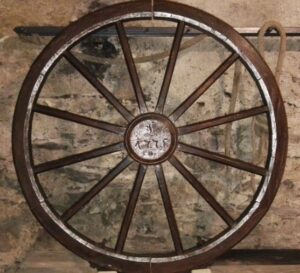
The Breaking wheel or Catherine wheel involved tying a victim to a large wheel and then breaking their limbs with a hammer or iron bar.
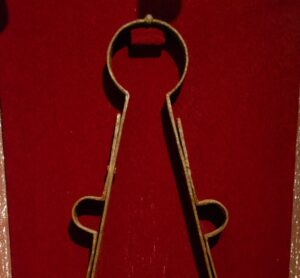
The Scavenger’s Daughter compressed the victim’s body into a compact position, causing extreme discomfort and sometimes asphyxiation.
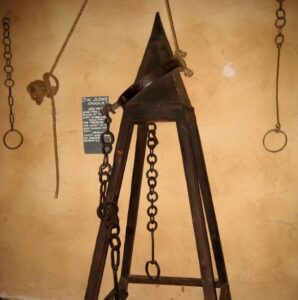
The medieval Judas Cradle consisted of a pyramid-shaped seat with a sharpened tip. The victim was lowered onto the pyramid.
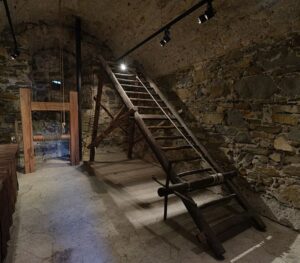
The rack was a medieval device consisting of a wooden frame with rollers at both ends, onto which the victim’s limbs were tied and stretched.

The Pear of Anguish was a torture and interrogation device used in medieval Europe. The device could be inserted and then expanded.

Although the brazen bull was originally Greek, it’s also associated with medieval times due to its notorious reputation.
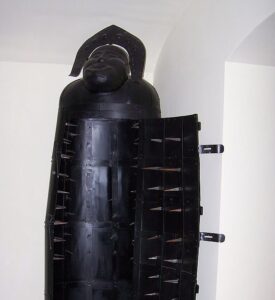
The The Iron Maiden is typically depicted as a large, upright, coffin-shaped structure with spikes on the inside. But did it actually exist?
While many medieval methods of torture involved specific instruments designed for inflicting pain or coercion, there were also methods that did not necessarily rely on specialized devices but were nonetheless effective in causing suffering. For example:
While many medieval methods of torture involved specific instruments designed for inflicting pain or coercion, there were also methods that did not necessarily rely on specialized devices but were nonetheless effective in causing suffering. For example:
Keeping a person awake for prolonged periods was another method of torture used to induce exhaustion and mental distress. Prisoners would be subjected to constant noise, bright lights, or physical discomfort to prevent them from sleeping, leading to hallucinations, cognitive impairment, and psychological breakdown.
Threatening a person with execution or simulating the process of execution without actually carrying it out was a method of psychological torture used to instil fear and terror. Prisoners would be subjected to fake executions, such as mock hangings or firing squads, to induce extreme psychological trauma.
Isolating a person in a small, dark cell for extended periods was a form of psychological torture used to induce feelings of loneliness, despair, and sensory deprivation. Without human contact or external stimuli, prisoners would experience profound psychological distress and deterioration of mental health.
Exposing a person to public ridicule, shame, or degradation was a form of social torture used to undermine their dignity and social standing. Prisoners would be subjected to humiliating acts or paraded through the streets while being mocked and jeered by onlookers.
Compelling a person to perform physically demanding or dangerous tasks under harsh conditions was a method of torture used to exhaust and punish them. Prisoners would be forced to engage in backbreaking labour, such as digging ditches, breaking rocks, or carrying heavy loads, leading to physical exhaustion, injury, and sometimes death.
A collection of books to help you uncover the gruesome details of torture methods, their historical context, and their impact on society.